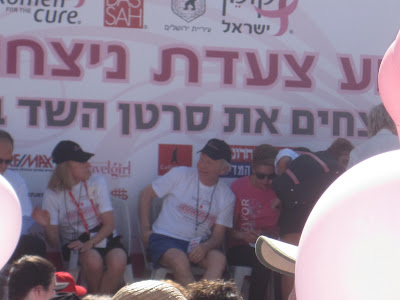Chanukah in Israel has been one of the things I've been looking forward to the most. Every December, I have found myself surrounded by a lot of Christmas decorations, hearing Christmas songs on the radio and in every store, and being wished a Merry Christmas. No offense to all of my friends who celebrate Christmas and/or enjoy the Christmas atmosphere... but it has truly been nice to be surrounded by Chanukah instead. Here is a glimpse of how I celebrated the holiday in Jerusalem.
On the first night of Chanukah, a bunch of us gathered in our apartment lobby and lit Chanukiyot (hebrew for Menorahs) together.
 |
| Those little tin menorahs were donated to us by a man in Tzfat. He sent us back to Jerusalem with 25 of them, including boxes of candles! |
It is tradition to eat food made with oil to remember the miracle of the Chanukah (there was only enough oil to last 1 day but it lasted 8 days). Doughnuts are a popular Chanukah treat. Here in Israel they are called Sufganiyot and they are EVERYWHERE! One evening, Olivia, Shai, and I ventured to Ne'eman bakery for my very first Sufganiya!
 |
| Jelly-filled and Chocolate filled |
 |
| My first bite of a sufganiya! (it was quite a disappointment as there wasn't any jelly inside) |
Everywhere I looked, there were chanukiyot. Menorahs like one were pretty much placed on every street corner!
Lit up menorahs were hung from every lamppost in the city center!
On the 6th night, Danit, Carolyn, Denise, Dina, & I went for some sufganiyot at Rolladin in Mamilla mall. They only had 2 flavors left- pistachio and sweet popcorn. Denise and I shared a sweet popcorn one but I wasn't such a fan of it- a little too buttery tasting for me. We then went to the Jaffa Gate in the Old City and were met by this beautiful blue Chanukiyah.
Carolyn, Dina, & I walked around town while Denise and Danit went to the kotel. In Kikar Safra, we came upon this enormous Chanukiah.
 |
| Trying to make it look like I'm holding the base of the Chanukiya |
On the 7th night, our group took our usual Tuesday siyur (trip/tour) but we waited until the evening. We were guided through the neighborhood of Nachlaot where we saw many many homes with their Chanukiyot outside. It is Jewish tradition to put your menorahs in the windows for everyone to see. Here in Israel (and probably in other Jewish neighborhoods all over the world), people put their Chanukiyot in boxes so they can be placed outside. Notice that this Chanukiya does not use candles, instead oil is used to replicate what our ancestors used to light the Menorah.
 |
| So many menorahs! |
For the last night, I decided to fry up some cheese latkes. Potato latkes (pancakes) are more commonly eaten on Chanukah, but this is a recipe that my mom has made for years. No matter how many times I try, they still do not look or taste as good as my mommy's latkes. My friends here all said they were delicious though so I guess my effort was a success.
 |
| I cannot take credit for this awesome picture of my delicious latke. Twas the work of PJ Edelman, |
Once again we all gathered to light the Chanukiyot together. It's always a little sad when the 8th night comes around because we now have to wait a whole year (well a Jewish year) until we see the beautiful lights of the Chanukiya once again. I hope you all had a wonderful light-filled Chanukah!
Don't be fooled by the lack of pictures documenting my sufganiyot consumption. During these 8 days, I ate many more than I'd like to admit...




























